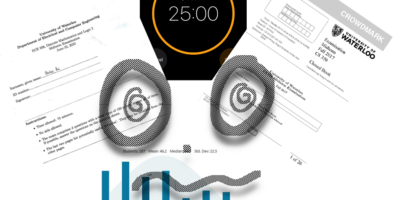Here we are in 2015, and after we buy our lunches, the clerk still hands us a paper receipt. Sometimes we read it. Sometimes we can save them for tax reasons. But the majority of the time, we throw them away without giving it a second thought. The businesses that issue these receipts to us are acutely aware that we do this, so why do they keep giving out paper receipts? The simple answer is convenience and reliability.
Consider alternatives to giving paper receipts—email, phone, or texting—as proof of transactions. At first glance, these methods seem to alieviate some of the problems of paper receipts. They don’t require businesses to keep running their receipt printers, they’re certainly better for the environment, and when paying with plastic, the business would know where to send proof of purchase. However, we cannot simply look at how we can make such a system usable, we also need to examine how we can break it. And the simple truth is that electronic receipts pose significant security and implementation problems that paper receipts do not have.
The first issue is one of security. When sending a proof of purchase, it is required that the communication be secure. This means that any mode of communication needs to withstand tampering (intentional modification of the receipt prior to it being sent), and eavesdropping (overhearing the receipt on the way to the customer). Paper receipts fill these criteria handily, as it is printed in front of your eyes, and only one copy is sent to you. Any attempt to compromise on paper receipts wouldn’t scale very well, as a potential malfeasant would need to get his own receipt printer, and would need to learn the format of the receipt in order to forge it.
Now consider if the business sent you an electronic receipt. How would they go about sending the receipt to the customer? Email? That would require the customer to give out their email address. Text message? That would require you to take down a customer’s number, adding time to an already busy queue. Can we get the customer’s credit card company or bank to send the receipt to them? Who would the customer then go to if he didn’t get the receipt? His credit card company? The store? What if the customer is paying in cash? Electronic receipts, while saving paper, do require more information from the customer in order to work, and so paper receipts are more useful to both the customer and the business than their electronic alter-ego.
Paper receipts are also a much more reliable form of giving out transactions than electronic receipts. Once the receipt is printed and delivered to the customer, both parties know that the receipt was exchanged and that the customer received the receipt information. Even if the customer throws out the receipt within a few seconds of getting it, he has been made aware that a transaction has taken place, and been offered the ability to review it. Compare this to electronic receipts. No matter how efficient the infrastructure will be for receipt delivery, there will always be a time lag between sending the receipt, and the customer getting the receipt.
So what can be done about alternative receipts? I believe that the answer lies in letting the customer choose the medium by which they get their receipts. People who find e-receipts advantageous could opt in to a program to get e-receipts. This would provide a win-win approach with businesses and consumers as businesses would get information about their clientelle, and consumers would be able to get e-receipts securely. E-receipts could also be tied in to customer loyalty programs in order to improve turnout.
An apt comparison can be made between paper receipts and plastic bags. Because they are more useful to us than they are wasteful, both have managed to survive to 2015. This counterpoint is not an attempt to disprove that fact, but is instead an acknowledgement that artificially restricting their use would mean foregoing all the benefits that paper receipts provide. Freedom of choice for businesses in this matter will allow paper receipts to compete against e-receipts, and allow customers to decide in what form they wish to receive confirmation of their transactions. Until then, paper is still the method of choice.




Leave a Reply